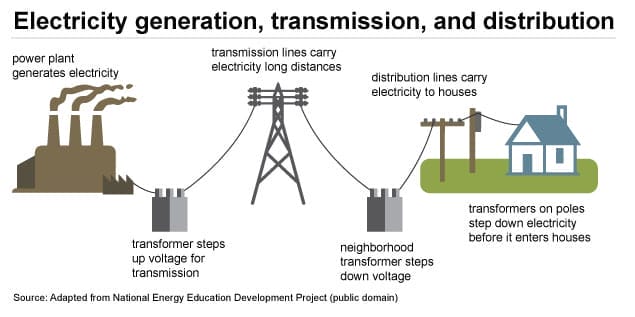Updated 11/24/2023
The electric power grid is like the air we breathe; we don’t think about it much until something goes wrong. The power appears when we need it at the flip of a switch.
We use electric power for heating, cooling, cooking, light, entertainment, and cars. Life as we know it doesn’t exist without the electric power grid.
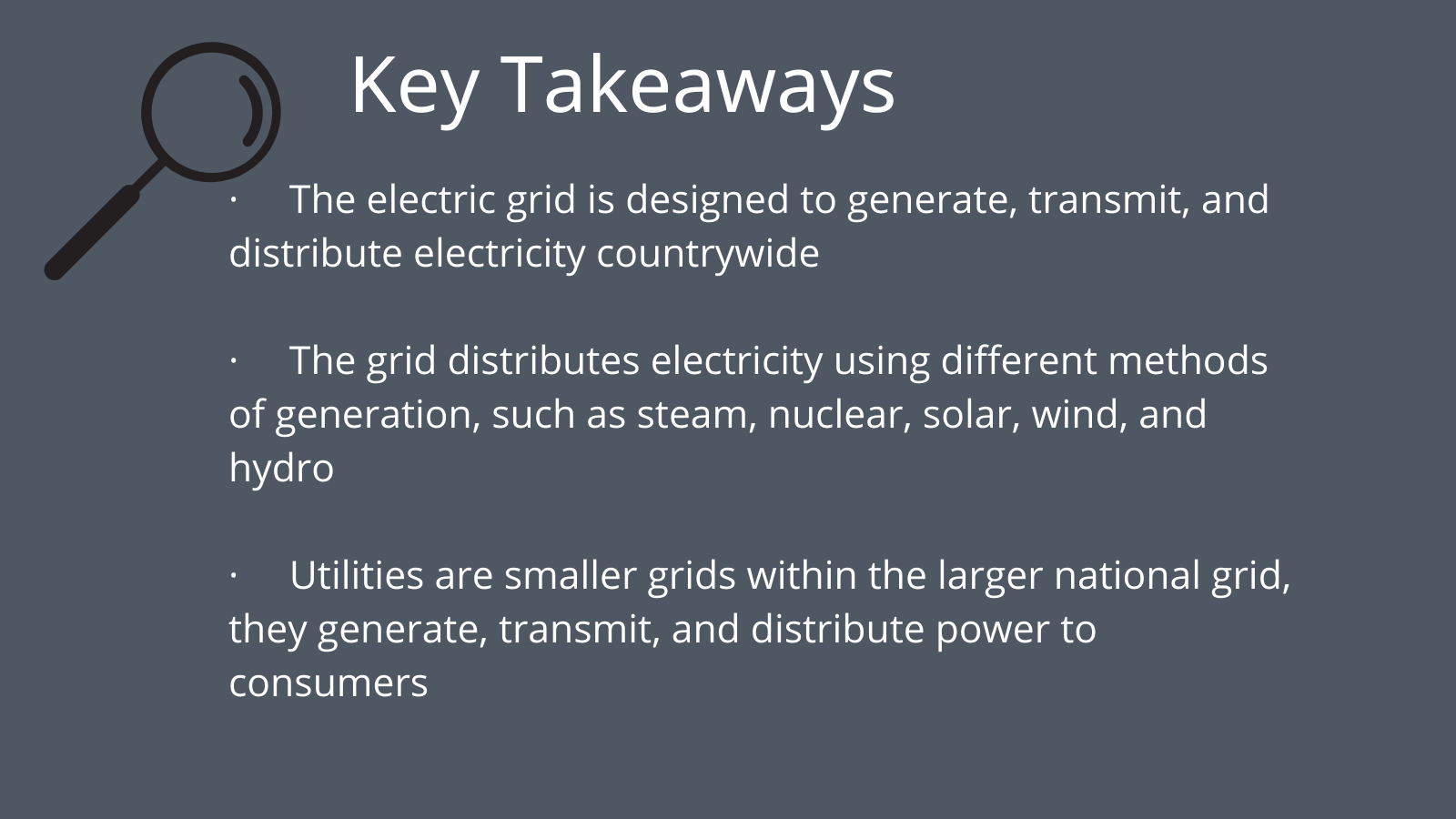
In today’s post, we will learn:
- What is the Electric Power Grid?
- How Does the Electric Power Grid Work?
- What is a Utility Power Grid?
- What are the 5 Electrical Grids in North America
- What are the Three Main Segments of the Electrical Power Grid?
Let’s dive in and learn more about the electric power grid.
What is the Electric Power Grid?
The electric power grid, per Wikipedia:
“is an interconnected network for electricity delivery from producers to consumers. Electrical grids vary in size and can cover whole countries or continents.”
The electric power grid is a system designed to supply electricity from generation. And to send to the customers who use the electricity. The grid has grown from local to stretching across the country, connecting millions of homes and businesses.
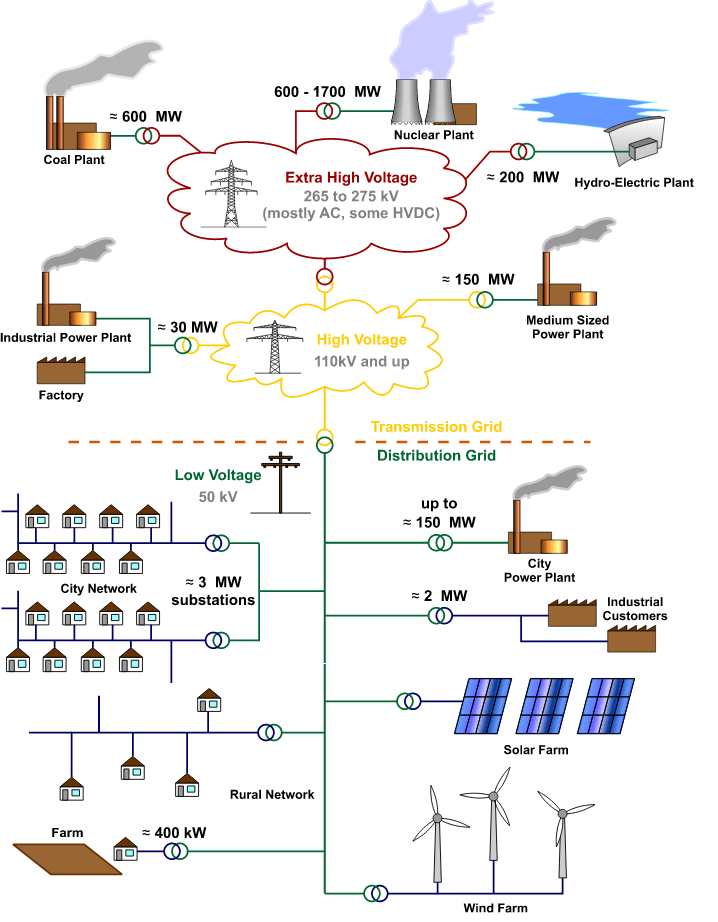
The grid consists of a series of complex interconnections containing three main sections:
- Electricity generation
- Transmission
- Distribution
We’ll dive further into these sections in a few moments.
The grid as we know it consists of four main sections, all interconnected:
- Power stations are often located near energy generation and away from large populations. For example, visualize solar farms, wind farms, nuclear plants, or dams.
- Electrical substations – which step up or down the voltage as it moves across the grid
- Electric power transmission – that carries the power over long distances. Visualize the large metal utility towers with power lines stretching into the distance.
- Electric power distribution carries power to consumers, adjusting the required voltage.
The US electrical power grid comprises more than power plants (solar farms). It includes millions of miles of lines that transport energy over long distances. And distribution systems provide power to the customer.
The grid is a complex system of:
- Asset owners (electricity generation)
- Manufacturers
- Service providers (utilities)
- Along with government officials at the federal, state, and local levels
All working together provide a seamless source of electricity.
Some interesting facts:
- Global net electricity consumption equals 23,845 TWh
- Global renewable installed capacity equals 2.84 TWH
- Wind power equals 93 GW capacity
- Solar equals 634 GW of capacity

We see residential leads from the above chart, followed by commercial and industrial.
Over the last few years, energy consumption has leveled. However, analysts project that energy consumption will explode in the future.
For example, in 2020, we used 3,802 trillion kilowatt-hours of electricity. But by 2050, the expectations are higher, with the US projected to use 5.2 trillion kilowatt-hours.
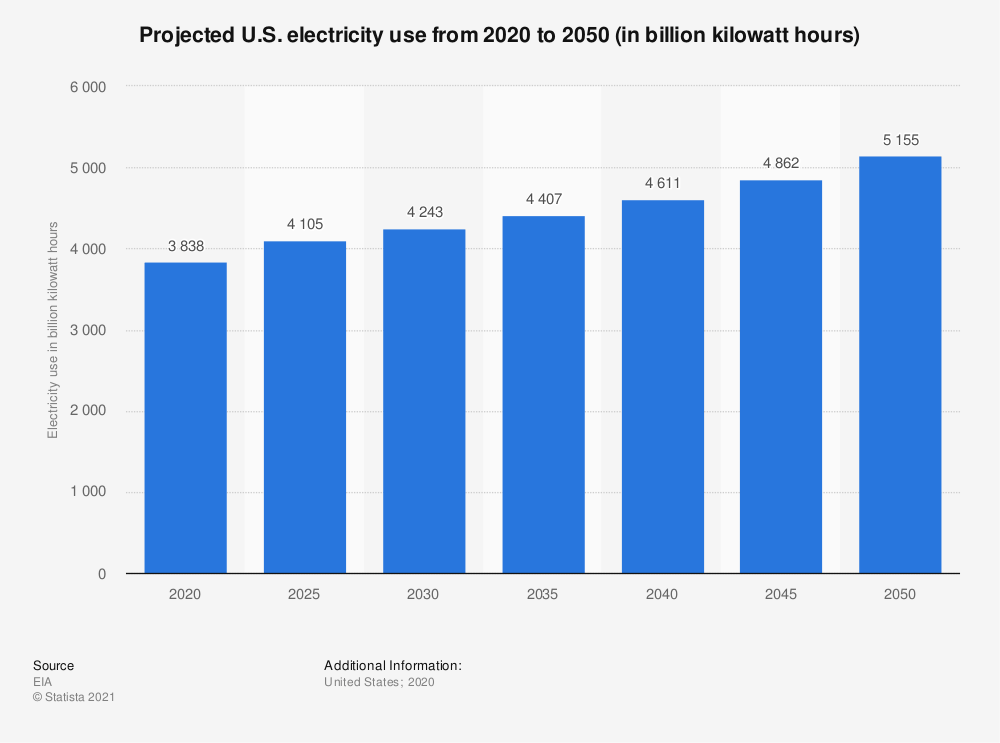
Much of the increase in electricity use stems from the following:
- estimated growth in electric vehicles
- continued growth in computer use
- smarter homes
- and much more
The increased electricity demand will push the electric grid as we know it today. Today’s grid is aging, and we are pushing it harder than its original design can handle.
One of the goals today is to upgrade the grid’s infrastructure. Modernize it to handle the higher loads. Plus, there is increased power generated by renewables like wind and solar.
How Does the Electric Power Grid Work?
The history of the electricity grid dates back to 1882, when Thomas Edison, yes, that Edison created the first power plant at the Pearl Street Station in lower Manhattan.
The grid has grown from Edison’s original 59 customers to hundreds of millions. But the basic architecture remains the same, even today.
According to the EIA (US Energy Information Administration, the electricity generation created from fossil fuels, coal, oil, and natural gas remains over 60% of our power, with nuclear creating another 20%.
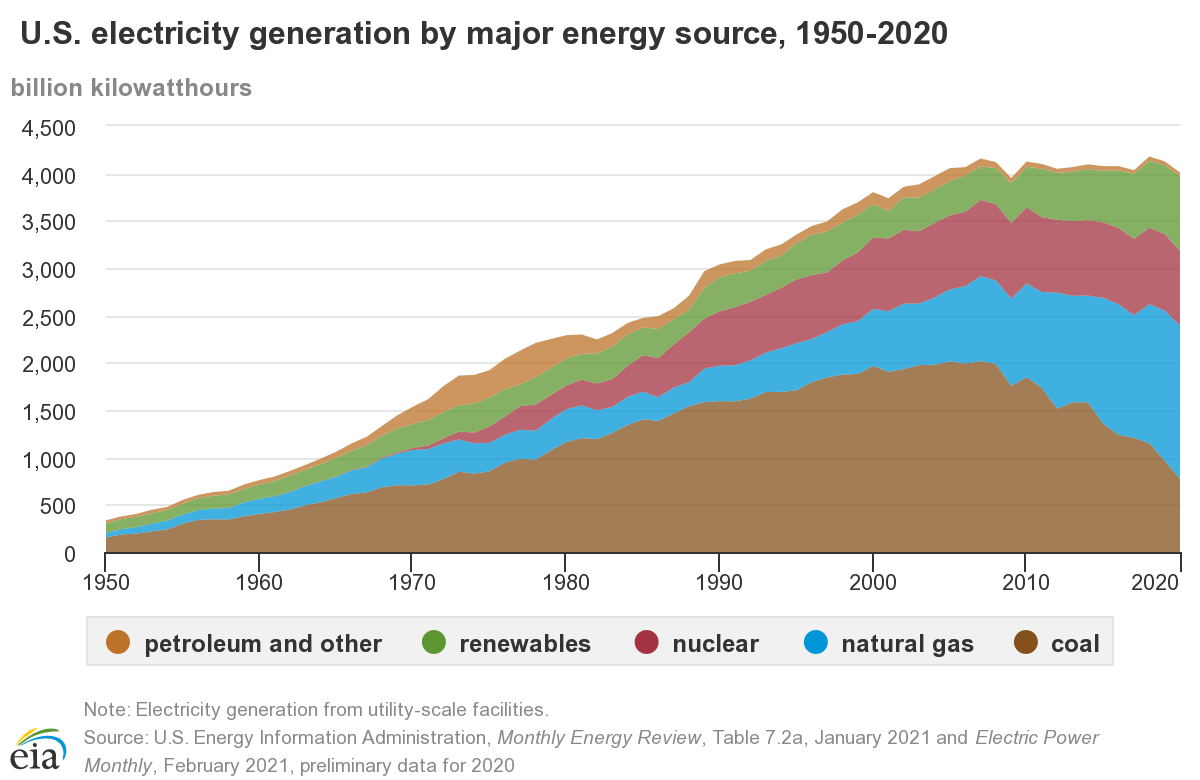
The grid sends power generation over lines to customers, converting for use.
The grid consists of three segments:
- Electricity generation
- Transmission
- Distribution
The grid is a huge machine comprising 7,700 power plants, 3,300 utilities, and 2.7 million miles of power lines. All these assets link together through the different grids across the US.
The grids link together, creating interconnections to regulate power production, transmission, and distribution.
The costs to create these interconnected grids are tremendous. And the utilities connected to the grid form a “natural monopoly” because of the high costs. Contrary to public opinion, the utilities help provide low-cost, reliable energy to customers.
Utilities face heavy regulation to maintain responsible behavior, ensuring price stability.
The original local grid systems grew with little oversight, but the 1965 New York blackout left over 30 million people without power. The utilities banded together to form NERC (North American Electric Reliability Council). Who helped manage the different grids in a more efficient way.
The Department of Energy’s Federal Energy Regulatory Commission (FERC) manages the grid today. Local authorities are still in control of power distribution to their end-users.
Renewable energy growth is exploding with the drop in costs and the focus on cleaner energy. According to the EIA, solar, wind, and hydro generated over 21% of electricity in 2020. And experts expect that to double by 2050.
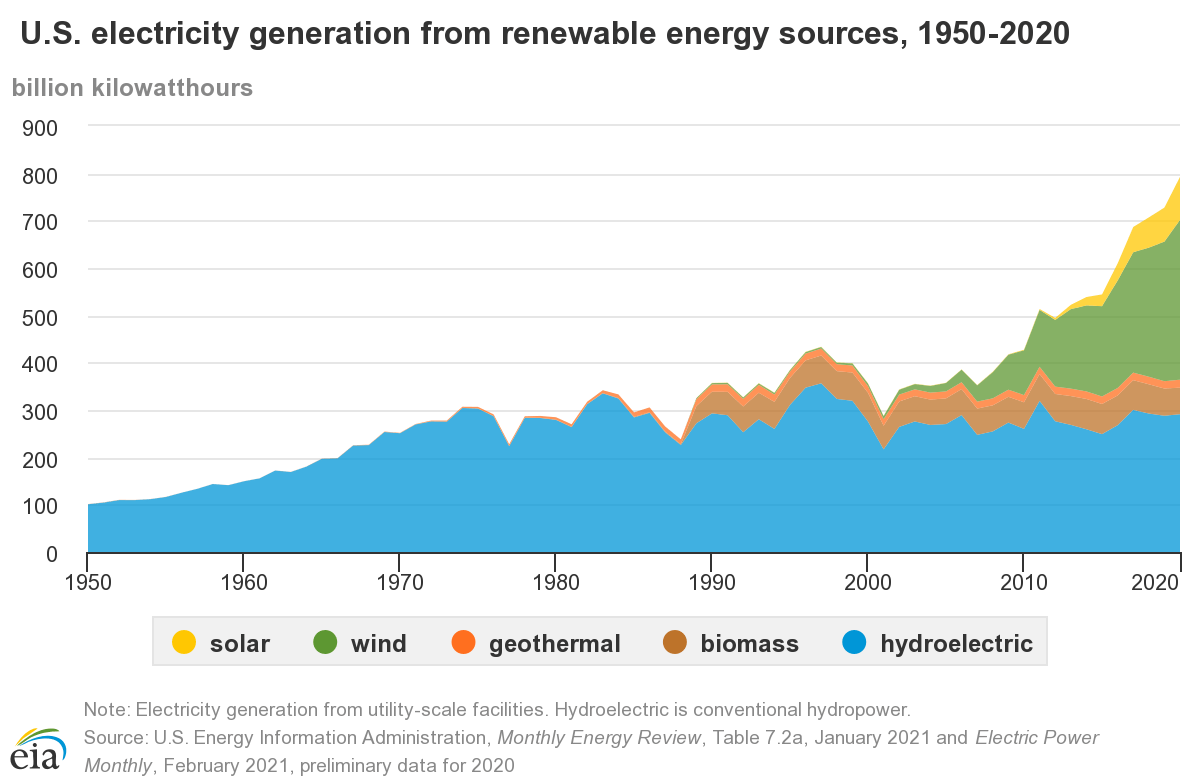
Yet, the growth in renewables, solar and wind, in particular, poses a challenge for the grid. For example, the change in renewables makes predicting the supply and demand challenging. The rise of individuals installing solar creates additional challenges.
The rise of solar power, which provides enough power for 18 million homes, puts additional strain on the grid. Companies like Tesla, which sells batteries and solar, provide alternatives to the grid.
These “off the grid” systems produce strains because of distributed generation.
The distribution helps utilities keep prices low for customers by spreading the costs.
But as more people leave the grid, via solar, for example, that can drive up costs for those still using the grid. These changes could hurt the individual and push utilities into a death spiral.
Consider how the grid works to generate power for users. The systems monitor the use and provide power on demand. Generating the power when we flick a switch or turn on a light.
Because of the possible variance in solar and wind, the other forms of generation, such as a steam turbine powered by natural gas, need to run to generate electricity. You can’t turn them on or off as needed.
There is little doubt that solar and wind power can generate enough energy, but the timing issue remains. We use most of our power between 5 pm and 8 pm when the sun doesn’t shine or the wind might not blow. We must use other generation forms, such as natural gas, to make up that slack.
Until better electricity storage options emerge, we remain chained to fossil fuels.
Enter the “smart grid” to help manage the flow of electricity. The smart grid is tech that manages the connections between generators and consumers.
The smart grid can help improve reliability and reduce power outages. Special meters on homes, businesses, and transmission lines will constantly check demand and supply. These technologies will help match the input and output of power to ensure a constant flow.
Below is a great video explaining the smart grid in greater depth.
What is a Utility Power Grid?
A utility grid is a commercial electric power generation system.
- distributes electricity from its generators
- and transmits it to its customers through its distribution system.
The utility grid operates in the same method but is smaller than the national grid.
Any utility is a company (often a public utility) that generates electric power, distributes it, and transmits it to its customers.
Most utilities are the major provider of electricity in their region. For example, NextEra Energy provides Florida with the majority of its electricity. Duke Energy provides a large swath of Ohio, Kentucky, Indiana, and the Carolinas.
The utilities generate electricity, buy power from producers, and manage the grid’s different segments. They are responsible for the upkeep and maintenance of their grid, including replacing aging infrastructure.
The utilities are the ones that manage to match the generation and demand for electricity.
We always have to remember that electricity usage is in demand. It only appears when we open that circuit by turning on our computer; the utility helps manage those flows.
What Are the 5 Electric Grids in North America?
The electrical grid that powers North America is not one large grid but combines many synchronous grids.
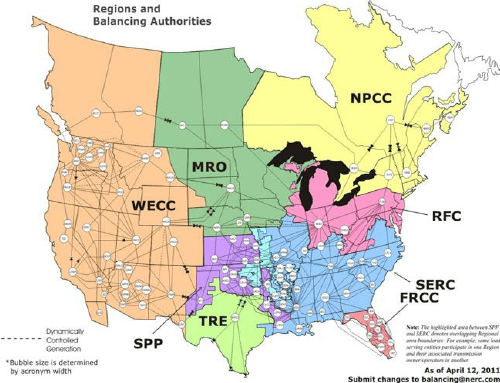
The grid consists of five separate grids interconnected:
- Eastern interconnection
- Western interconnection
- Texas interconnection
- Quebec interconnection
- Alaska interconnection
Here are a few facts about the different grids. First, the two largest grids are the Eastern and Western. Each region is not connected directly, but there are some connections throughout.
The US and Canada have national standards that guarantee voltages in the range of 120 V, allowing for a range between 114 V and 126 V.
The Eastern, Western, and Texas interconnections have DC interconnects that allow electrical power to flow across the US, Canada, and parts of Mexico.
Inside these different interconnections are utilities and electrical power producers operating on these grids. Some connections permit electricity produced in one interconnection to be sold to other interconnections.
For example, Berkshire Hathaway Energy owns wind farms in Nebraska and Iowa. They can sell that electricity to the Western or Texas interconnections.
These separate grids help explain the different issues each experiences occasionally. For example, the recent cold snap in Texas during the winter of 2021 caused power interruptions, which killed 246 people and left 4.5 million homes without power.
The initial blame was frozen wind turbines and solar panels, but further research revealed that failure to winterize power sources, primarily natural gas, caused the grid-wide failure.
Texas’s grid has long been separate from the two major grids, and during the crisis, Texas had difficulty importing electricity from the nearby grids.
What Are the Three Main Segments of the Electric Power Grid?
The electric power grid consists of three main sections:
- Generation
- Transmission
- Distribution
The origin of the electricity that consumers use varies. Some electric utilities generate that power using power plants they own. Others buy electricity from other utilities, power brokers, or independent producers.
Below is a breakdown of the three main sections.
Generation
Electricity begins with power plants that convert mechanical energy into the electricity we know. The power plants use generators to create electricity from fuels such as coal, natural gas, or nuclear fusion. Burning these fuels creates steam, which moves turbines with copper wiring and generates electricity.
Renewable forms of energy such as wind and solar, generate power from each source. Wind turbines use processes similar to those of machines, as mentioned earlier. At the same time, solar uses the power of photovoltaic cells to convert sunlight into DC, then convert it to AC for use.
The power plants generating electricity are often far away from the electricity demand. For example, Nuclear power plants are typically outside of city limits.
Transmission
The transmission of electricity includes two main parts:
- Power lines
- Transformers
The grid accomplishes electrical transmission by the use of power lines. Electricity generated at the source passes through transmission stations where the electricity is “stepped up.” That means they increase the voltage while decreasing the electric current.
They do the step-up of voltage by use of a transformer. The “stepped-up” voltage allows the electricity to flow long distances.
Using step-up transformers means electricity loses energy due to resistance while traveling long distances over conducting wire. That problem is solved, in part, by using high-voltage power lines.
Distribution
The electricity distribution starts with “stepping down” the voltage using transformers. These substations use transformers that reduce the voltage to safer levels. While great for transporting long distances, the higher voltage is unsafe for people to handle.
The distribution grid or power lines along your neighborhood connect these substations to the electricity consumers, businesses, or homeowners.
New sources are beginning to take shape along with these sources of grid generation, transmission, and distribution.
For example, advanced metering or smart meters are starting to appear. These meters allow consumers to manage and adapt to energy needs and lower their bills.
The continuing development of grid-scale batteries or grid-scale energy storage is one of the biggest bottlenecks to adopting renewable energy. Until we solve this bottleneck, grid-scale adoption of renewable energy will remain a dream.
There are also the developments of microgrids, such as solar and wind, which provide energy needs for smaller footprints. You can start to see this in sunnier regions of the US, like Hawaii, where solar panels are everywhere. These microgrids allow consumers to disconnect from the grid and be self-sustaining.
Investor Takeaway
For investors to start investing in the future of renewable energy, we need to understand the current energy grid. And how it transmits electricity and adapts to today’s new energy sources.
Understanding the grid structure helps you understand why hydropower is so important. And why the companies such as Brookfield Renewable Energy keep investing in these assets.
Understanding the impact of a wind farm in the middle of the ocean or nowheresville is also helpful.
All decisions impact our understanding of the grid, helping you make better investments.
The future grid needs to evolve and update to support the coming adoption of electric cars, along with the necessary charging stations.
If you want to learn more about the grid and electricity here in the US, I strongly encourage you to check out EIA.gov, a great website with tons of information, graphs, and videos.
And with that, we will wrap up our discussion on the electric power grid.
As always, thank you for taking the time to read today’s post. And I hope you find something of value along the way. If I can further help, please don’t hesitate to reach out.
Until next time, take care and be safe out there,
Dave

Dave Ahern
Dave, a self-taught investor, empowers investors to start investing by demystifying the stock market.
Related posts:
- What to Know Before Investing in Solar Energy Updated 11/24/2023 Solar power, wind, and hydro are the leaders among energy investments globally, with over $175.8 billion in solar. But what do we know...
- How Electricity Generation Works Updated 11/24/2023 Consumers have begun to embrace the many forms of renewable energy despite rising environmental concerns. Investments in electricity generation are increasing tenfold, with...
- Berkshire Hathaway 10Q Summary First Quarter 2020 Berkshire Hathaway reported its first-quarter earnings on May 2, 2020. This report is a summary of those first-quarter results and will not attempt any analysis...
- BNPL Companies: Changing the Landscape of Payments Buy Now, Pay Later. The “new” payment scheme trend many analysts project will generate $100 million in sales in 2021. The buy now, pay later...


